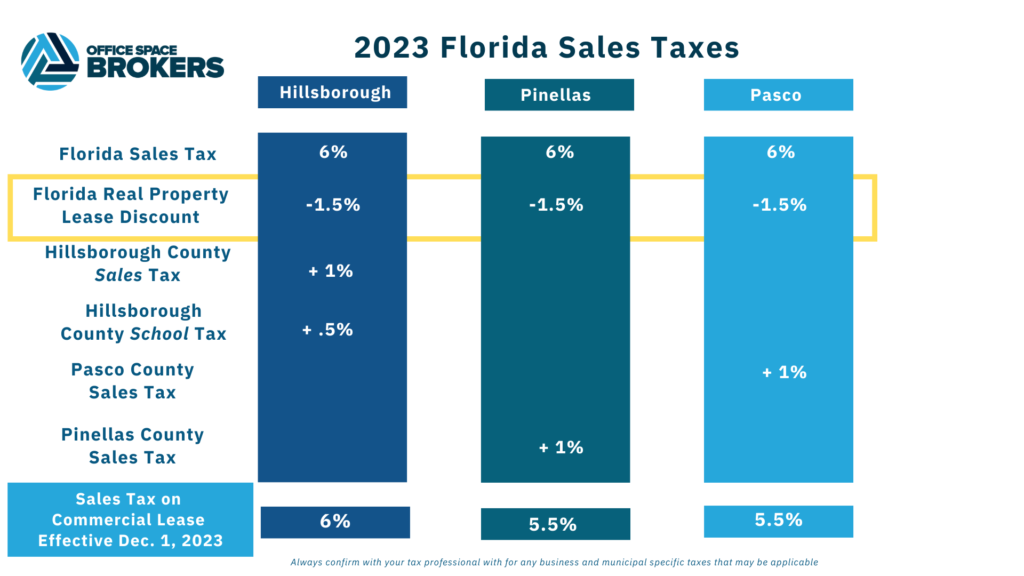Surprise to companies who expand or relocate to Florida, Florida is the only state that charges sales tax on commercial leases. Each year this number can fluctuate based on the decisions in Tallahassee and typically is in effect first quarter of the following year. A great surprise for our state, Christmas and Hannukah came early this year with a 1.5% discount from the state effective December 1, 2023. For example, in Hillsborough County, sales tax on commercial leases has been 7% through out 2023.
As you see in the below graphic, each county has their own additional taxes that are included in this number. Historically, Hillsborough County is one of the highest.

Always consult your CPA for tax advice especially for in municipalities that collect other taxes such as nuances in Oldsmar, Tarpon Springs, Wesley Chapel and Zephryhills.



